Related Research Articles

Monterrey is the capital and largest city of the northeastern state of Nuevo León, Mexico. The city is anchor to the Monterrey metropolitan area, the second most productive in Mexico with a GDP (PPP) of US$140 billion in 2015, and the second largest metropolitan area in Mexico with an estimated population of 5,341,171 people as of 2020. According to the 2020 census, the city itself has a population of 1,142,194. Monterrey is one of the most livable cities in Mexico, and a 2018 study found that suburb San Pedro Garza García is the city with the best quality of life in Mexico. It serves as a commercial center of northern Mexico and is the base of many significant international corporations. Its purchasing power parity-adjusted GDP per capita is considerably higher than the rest of Mexico's at around US$35,500, compared to the country's US$18,800. It is considered a Beta World City, cosmopolitan and competitive. Rich in history and culture, it is one of the most developed cities in Mexico.
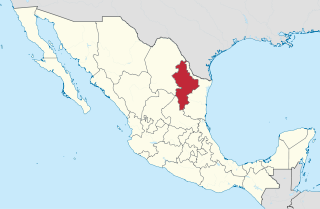
Nuevo León is a state in the Northeast region of Mexico. The state was named after the New Kingdom of León, an administrative territory from the Viceroyalty of New Spain, which itself was named after the historic Spanish Kingdom of Leon. With a total land area of 64,555 square kilometers. Nuevo León is the 13th largest Federal Entity in the United Mexican States. The state is bordered by Tamaulipas to the east, Coahuila to the west, also by Zacatecas and San Luis Potosi to the south. As well, as an international border with the United States, sharing the border with the state of Texas to the North. The Laredo-Colombia Solidarity International Bridge is the only vehicular bridge that connects the United States with the state of Nuevo León. Connecting both, the city of Colombia, Nuevo León and Laredo, Texas, crossing over the Rio Grande river.

The Autonomous University of Nuevo León is a public university with seven campuses across the Northern state of Nuevo León, Mexico. Founded as University of Nuevo León on 25 September 1933, it is the third largest public university in Mexico in terms of student population and the most important institution of higher learning in Northeastern Mexico, which offers the highest number of academic programs. It is also the oldest university in the state, it is currently headquartered in San Nicolás de los Garza, a suburb of Monterrey.

Reyes Tamez Guerra is a Mexican immunochemist. He is a former Secretary of Education for the State of Nuevo León, a former president of the Autonomous University of Nuevo León (UANL) and a former Secretary of Education in the cabinet of Vicente Fox (2000–2006).
Pablo Rudomin Zevnovaty is a Mexican-Russian biologist, physiologist, and neuroscientist. He is regarded as one of the most prestigious neurophysiologists in the international community. His studies have been fundamentally directed to the analysis of mechanisms of the central control of the information transmitted by the sensory fibers in the spinal cord, and of how these are modified during central and peripheral injuries, as well as during processes of acute inflammation.
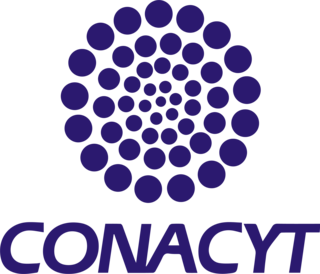
Consejo Nacional de Ciencia y Tecnología is Mexico's entity in charge of the promotion of scientific and technological activities, setting government policies for these matters, and granting scholarships for postgraduate studies. It is the equivalent of the US's National Science Foundation and Argentina's CONICET. It is officially designated as a decentralized public agency of Mexico's federal government. CONACYT was founded in 1970.
The National Prize for Arts and Sciences is awarded annually by the Government of Mexico in six categories. It is part of the Mexican Honours System and was established in 1945. The prize is a gold medal and 520,000 pesos.
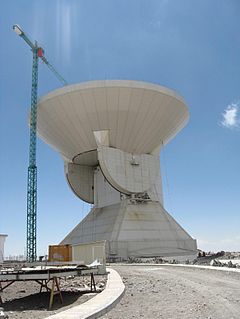
The history of science and technology in Mexico spans many years. Ancient Mexican civilizations developed mathematics, astronomy, and calendrics, and solved technological problems of water management for agriculture and flood control in Central Mexico. Following the Spanish conquest in 1521, New Spain was brought into the European sphere of science and technology. The Royal and Pontifical University of Mexico, established in 1551, was a hub of intellectual and religious development in colonial Mexico for over a century. During the Spanish American Enlightenment in Mexico, the colony made considerable progress in science, but following the war of independence and political instability in the early nineteenth century, progress stalled. During the late 19th century under the regime of Porfirio Díaz, the process of industrialization began in Mexico. Following the Mexican Revolution, a ten-year civil war, Mexico made significant progress in science and technology. During the 20th century, new universities, such as the National Polytechnical Institute, Monterrey Institute of Technology and research institutes, such as those at the National Autonomous University of Mexico, were established in Mexico.
The UANL High School System consists of 29 schools in Nuevo León affiliated with the Autonomous University of Nuevo León The high schools have several programs such as the propedeutic baccalaureate, bilingual program, bivalent program in bilingual education, binational program in bilingual education, technical program, and the University Superior Technician degree. Three schools offer technical education, and one school, CIDEB, offers the International Baccalaureate Diploma Programme. Fifteen schools are in the metropolitan area of Monterrey.
José María Cantú Garza was a Mexican genetics researcher.

Julio E. Rubio is a Mexican researcher and administrator at Tecnológico de Monterrey.
Anabella del Rosario Dávila Martínez is a Mexican professor and researcher at the Monterrey Institute of Technology and Higher Studies as well as the director of the doctorate program in administrative sciences of the EGADE Business School on the Monterrey Campus.

Alfonso Rangel Guerra is a Mexican lawyer, educator, writer and administrator.
José-Carlos Lozano-Rendón is a researcher in the area of Latin American media studies and in the social history of cinema who has done extensive empirical research on international and political communication based on critical theoretical approaches such as political economy and cultural studies. He is the author of one of the most popular and influential textbooks in Latin American communication schools: "Mass communication theories and research", published by Pearson since 1996. Having born and grown up in the Texas-Mexican border has also motivated him to work on issues related to media, culture and identity in this region. Lozano-Rendón is a professor and researcher at Texas A&M International University, in Laredo, Texas since 2012, and Research Fellow at the Universidad Autonoma de Nuevo León, Mexico since 2020. He was Professor of Communication from 1992 to 2012 and Research Fellow from 2012 to 2020 at the Tecnológico de Monterrey, Campus Monterrey. Since 1993 he has been a member of the National System of Researchers (SNI) of the National Council for Science and Technology (CONACYT) in Mexico, being appointed National Researcher Level 3 for the period 2018 to 2028. He was admitted as a regular member of the Mexican Academy of Sciences in 2007. He has a Ph.D. in International Communication from the University of Texas at Austin, a Master's in Mass Communication from the University of Leicester, and a BA in Social Communication from the Universidad Regiomontana.
Israel Cavazos Garza was a Mexican historian, writer, and academic whose academic and historiographic publications included A Brief History of Nuevo Leon and Mariano Escobedo, the Glorious Republican Soldier. He was a member of the Mexican Academy of History, and his works focused primarily on the regional history of the northeast side of Mexico with particular interest in Nuevo León.

Mauricio de la Maza-Benignos is a Mexican Conservationist, Naturalist and Zoologist. He is also a member of Mexico's National System of Researchers. In addition to his work in ichthyology, he is an agronomist and zootechnician, a jurist, an administrator, and an editor. He earned his bachelor's degree at the Monterrey Institute of Technology and Higher Education, a Master of Business Administration at The University of Lancaster, a Ph.D. summa cum laude, at the Autonomous University of Nuevo León, and studied Law, under a merit scholarship at the TecMilenio University. In 1994 he obtained the “Best students of Mexico Award” by the “National Permanent Committee for the Best Students of Mexico”, and in 2014 he was awarded first place in the “Dr. José Álvarez Del Villar” prize for his doctoral thesis, by the Mexican Ichthyology Society. He developed his doctoral thesis under the direction of Professor and Ichthyologist Ma. de Lourdes Lozano-Vilano, with whom he continues to do research. He also collaborates with geneticist and ichthyologist Dr. Evan W. Carson at UNM, mainly in the area of conservation genetics. In 2015 he was awarded the UANL Research Prize to the best scholar paper in the Natural Sciences during 2014. From 2006―2011, he served as Director for the World Wide Fund for Nature (WWF), Chihuahuan Desert Program; and from 2011― as Conservation Science Director and Chief Executive Officer for Mexican NGO, Pronatura Noreste.
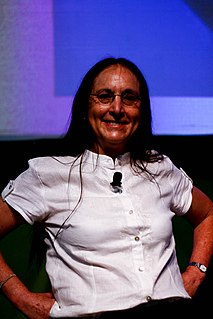
Julieta Norma Fierro Gossman is a Mexican astrophysicist and science communicator. She is a researcher at the National Autonomous University of Mexico (UNAM), in its Institute of Astronomy.
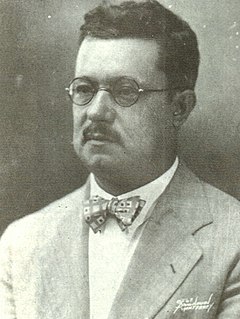
Héctor González González was a Mexican and regiomontano lawyer, politician, writer, journalist, and intellectual. He was a founder and the first rector of the Universidad Autónoma de Nuevo León
Julia Tagüeña Parga is a Mexican physicist from the School of Science at the National Autonomous University of Mexico (UNAM) and Doctor of Science from the University of Oxford.
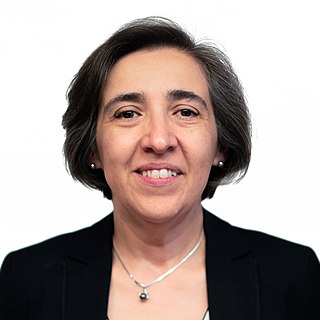
Ana Cecilia Noguez Garrido is a Mexican physicist, professor, and science communicator. A specialist in the interaction of light with matter on a nanometric scale, she won a National Prize for Arts and Sciences in 2016.
References
- 1 2 3 4 5 6 7 8 9 "Leticia Myriam Torres Guerra" (in Spanish). Advisory Council of Sciences of the Presidency of the Republic. Retrieved August 31, 2021.
- 1 2 3 Villarreal, Paola (November 26, 2019). "Universidad Regiomontana premia a Dra. en el 'Premio Valor Regiomontano 2019'" [Universidad Regiomontana Recognizes Dr. With the "2019 Valor Regiomontano Award"] (in Spanish). Pronetwork. Retrieved August 31, 2021.
- ↑ Armendáriz, Esperanza (October–December 2010). "Entrevista a la doctora Leticia M. Torres Guerra" [Interview With Doctor Leticia M. Torres Guerra](PDF). Ciencia UANL (in Spanish). Autonomous University of Nuevo León. XIII (4): 352–354. ISSN 1405-9177 . Retrieved August 31, 2021.
- 1 2 Torres, Isaac. "Forum 45. Leticia Torres Guerra: Hay que resolver los problemas de las empresas con ciencia" [Forum 45. Leticia Torres Guerra: We Must Solve Companies' Problems With Science] (in Spanish). Foro Consultivo Científico y Tecnológico. Retrieved August 31, 2021.
- ↑ Bustos Cardona, Laura. "'Nada sucede por casualidad cuando se hace ciencia'" ["Nothing Happens by Chance When Doing Science"] (in Spanish). CONACYT . Retrieved August 31, 2021.
- ↑ Torres Cruz, Isaac (April 16, 2012). "Realizar conocimiento básico puede generar riqueza" [Attaining Basic Knowledge Can Generate Wealth]. La Crónica de Hoy (in Spanish). Retrieved August 31, 2021.
- ↑ "Designan a la Dra. Leticia Myriam Torres Guerra como Directora General del Cimav" [Dr. Leticia Myriam Torres Guerra Designated General Director of CIMAV] (in Spanish). Advanced Materials Research Center. December 2019. Retrieved August 31, 2021.
- ↑ Armendáriz, Esperanza (March 15–31, 2012). "Honran a mujeres comprometidas con la sociedad" [Women Committed to Society Honored]. Vida Universitaria (in Spanish). Autonomous University of Nuevo León. p. 5. Retrieved August 31, 2021.
- ↑ "Gobierno de NL entrega Medalla al Mérito Cívico" [Government of NL Presents Medal of Civic Merit]. Milenio (in Spanish). Monterrey. September 29, 2015. Retrieved August 31, 2021.
- ↑ "Acuerdo por el que se otorga el Premio Nacional de Ciencias 2018" [Agreement for the Awarding of the 2018 National Sciences Prize]. Official Journal of the Federation (in Spanish). Secretariat of the Interior. October 29, 2018. Retrieved August 31, 2021.